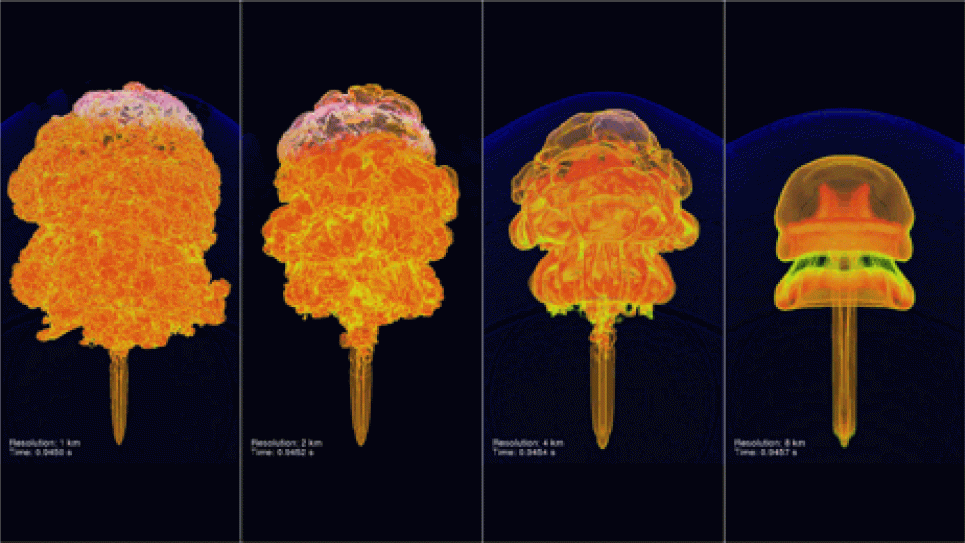
Petascale Simulations of Turbulent Nuclear Combustion
Type Ia (thermonuclear-powered) supernovae are important in understanding the origin of the elements and are a critical tool in cosmology. These explosions produce a significant fraction of the heavy elements in the universe, and are therefore important in understanding the origin of the elements of which planets and life on Earth are made. Observations using Type Ia supernovae as “standard candles” revealed that the expansion of the universe is accelerating, which led to the discovery of dark energy. Understanding dark energy ranks among the most compelling problems in all of physical science. Type Ia supernovae are one of the most promising tools for determining the properties of dark energy. This is the purpose of the simulations that the Flash Center will do as an early science user on the next-generation Blue Gene system. To be specific, the Center will use the FLASH code to carry out large-scale, 3-D simulations of two key physical processes in Type Ia supernovae that are not fully understood: (1) buoyancy-driven turbulent nuclear combustion, and (2) the transition from nuclear burning in the flamelet regime to distributed nuclear burning. The simulations will be the largest ever done. The number of grid points in them will exceed by a factor > 20 those in the simulations the Center has done to date on the ALCF’s Blue Gene/P computer, Intrepid.